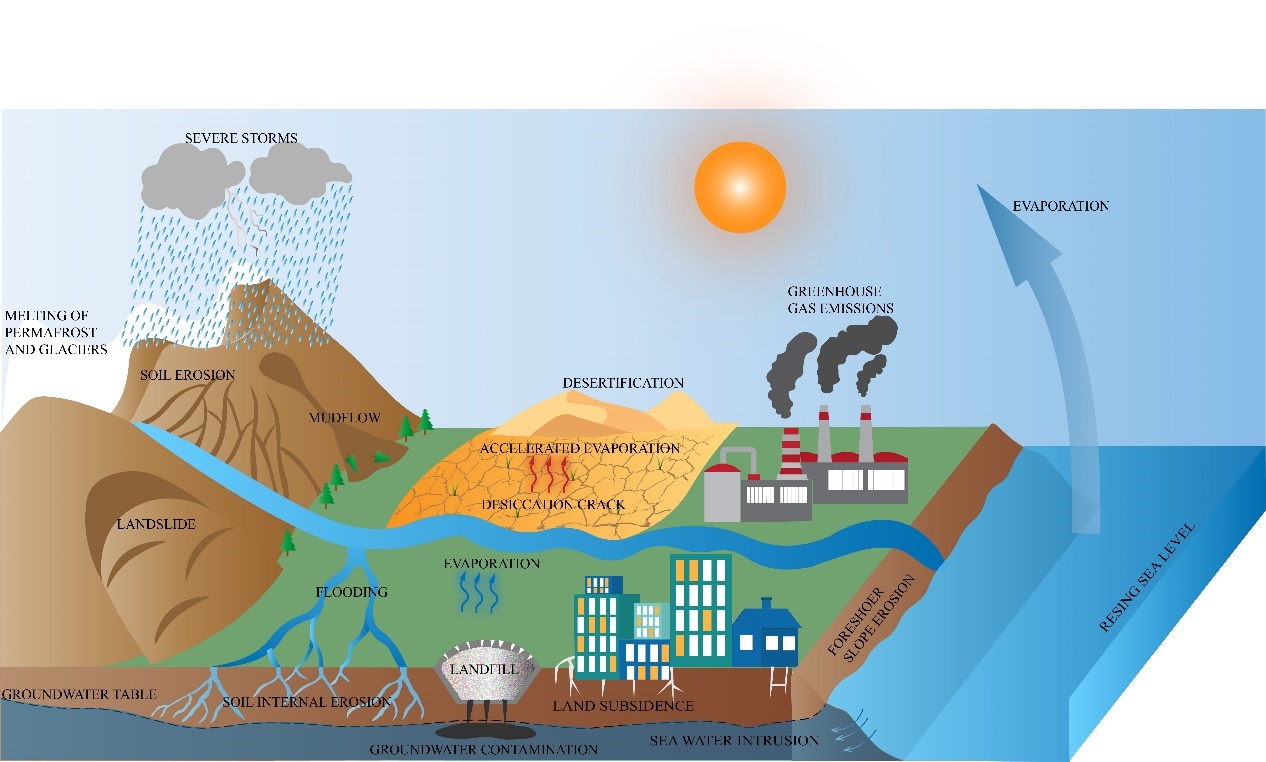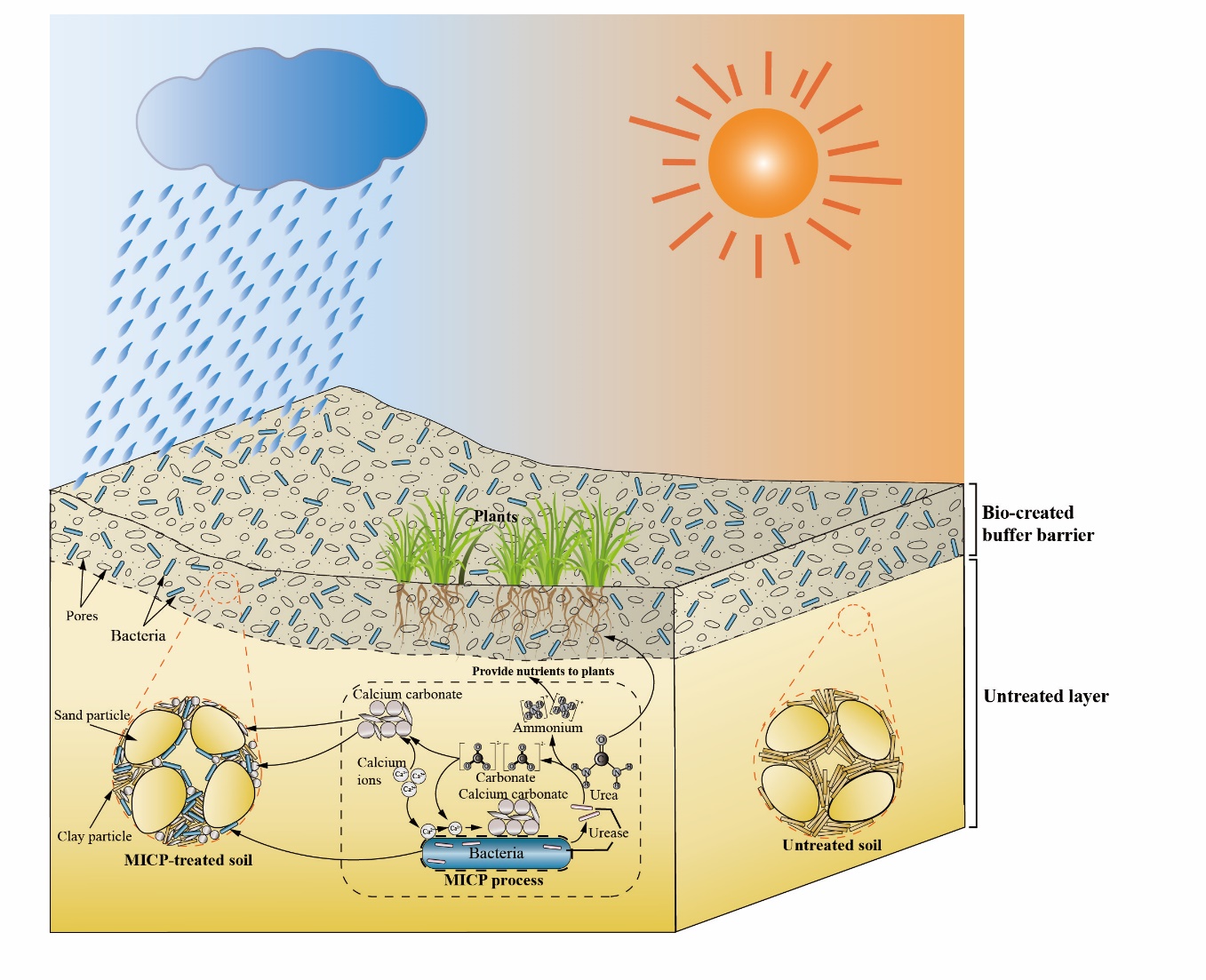China is one of the countries with the most severe extreme climate events and disasters in the world. According to the Intergovernmental Panel on Climate Change (IPCC, 2021), global climate change has caused dramatical increase in the frequency, intensity, impact range and duration of various extreme climate events, such as heavy rainfall, long-term drought, low-temperature cold waves or high-temperature heat waves that occur once in many years. These extreme climate events will significantly change the engineering properties of surface soil through a series of material and energy exchanges, leading to serious deterioration of engineering geological conditions, thereby inducing various extreme geological disasters and ecological and environmental problems (Figure 1). And such extreme climate events also bring many new challenges to current engineering geological research and major engineering construction, seriously restricting the sustainable development of social economy.

Figure 1. A schematic diagram of the effect of climate change on soil properties and processes.
Therefore, based on the concept of “resilience-low carbon”, Professor Chao-Sheng Tang's research team innovatively proposed the atmosphere-soil interaction control measures using bio-technology, that is, using a widely existing bio-mineralization behavior in nature (microbially induced calcium carbonate precipitation - MICP) to modify the surface soil, and construct a bio-created buffer layer (BBB) on the soil surface. The special structure of BBB can regulate the mass and energy exchange process at the atmosphere-soil interface, reduce the intensity of climate effect, and thus achieve the purpose of balancing the physical and mechanical state of the soil and improving the resilience of the soil to climate change (Figure 2). The research team carried out a series of experimental studies around this concept, simulating extreme drought and heavy rainfall climate conditions, and systematically analyzed the effect and mechanism of bio-created buffer layer (BBB) in enhancing the soil resilience to climate change. The results show that after the treatment of microorganisms, the evaporation rate and surface crack rate of surface soil in drought climates were reduced by 32% and 85% respectively, the water retention capacity of the soil was significantly improved; while the soil loss in a rainfall climate was reduced by more than 90% (Figure 3), showing remarkable soil erosion resistance. The microstructure analysis revealed that the content and distribution of calcium carbonate induced by microbe in the soil are key factors affecting the soil modification effect. The stable porous skeleton structure formed by surface soil particles cemented by calcium carbonate crystals can effectively improve the evaporation/infiltration resistance and mechanical strength of the surface soil, and maintain the relative balance of the thermal-hydraulic-mechanical state of the soil under climate change conditions. The bio-technology involved in this research is low-carbon, environmentally friendly, efficient and sustainable, providing a nature-based solution for soil ecological environment protection and disaster prevention and control under global climate change.

Figure 2. A schematic diagram of the bio-created buffer layer (BBB) on the soil surface.

Figure 3. Variations of soil properties after microbial treatment: (a) evaporation rate; (b) surface crack rate; (c) cumulative soil loss; (d) soil erosion rate.
The above research results were recently published in the Journal of Geophysical Research: Earth Surface entitled "Enhancing Soil Resilience to Climatic Wetting-Drying Cycles through a Bio-Mediated Approach". The significance of the paper was highlighted by the editor-in-chief of the journal (I think this manuscript will make a nice addition to the literature on MICP). Professor Chao-Sheng Tang is the first author and corresponding author of the paper, and Dr. Bo Liu from Nanyang Technological University, Singapore is the co-corresponding author. The research work was funded by the National Outstanding Young Scientist Fund, Key Program of National Natural Science Foundation of China, the National Key Research and Development Program of China, and other projects.
Paper link:http://doi.org/10.1029/2023JF007573

